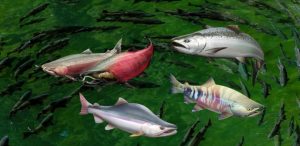Sacramento County supervisors on Wednesday approved a $5 million plan to beef up patrols along the American River Parkway and clean up its homeless encampments.
The 3-2 vote came after dozens of residents packed the supervisors’ chambers to support or denounce the proposal to add park rangers, maintenance staff and sheriff’s employees to the 23-mile “jewel of Sacramento” and adjacent neighborhoods.
Some speakers recounted bad interactions with homeless people. Others expressed compassion for the homeless but said they wanted a clean, safe parkway. Still others denounced the proposal as “criminalizing the homeless.”
Supervisors Phil Serna, Don Nottoli and Patrick Kennedy voted for the measure. Supervisors Susan Peters and Sue Frost voted against it, citing concerns about funding.
Kennedy said the issue is “a tale of two tragedies” – homelessness and the condition of the parkway. “I think (the plan) is a little heavy on the law enforcement side, and I fear it will just move people around,” Kennedy said. “But we have to try something … It’s devastating. We just can’t let (the parkway) continue to deteriorate.”
Aimee Rutledge, head of the Sacramento Valley Conservancy, said the conservancy’s property, Camp Pollock, is at “ground zero” in the lower reaches of the river with a clear view of the degradation of a precious natural resource. “To abandon (the parkway) would be to abandon the best part of Sacramento,” she said.
Last month, supervisors asked staff to find ways to fund additional employees for animal control, waste collection and the Sacramento County Sheriff’s Department Homeless Outreach Team.
Staff members found several sources of funding but not enough to cover the full costs of the program. Staff laid out options costing $3 million, $4 million and $5 million, which had $1.4 million, $2.9 million and $3.8 million funding gaps. Going forward, the funding gaps increase to $1.8 million, $3.2 million and $3.9 million for consecutive budget years, they said.
“Where is the money going to come from?” Peters asked Wednesday.
County Executive Nav Gill said there’s a $3.4 million placeholder in the budget that will come before the board next month and could be used to fund the parkway plan.
Serna launched the parkway debate in June when he requested between $3 million and $5 million to address the impacts of homeless campers.
Other supervisors countered that campers would simply move into the surrounding neighborhoods when rousted. As a compromise, the board asked staff to come up with options to also clean up unincorporated areas of the county adjacent to the parkway.
Karen Humphrey, former mayor of Fresno, told supervisors the plan will “just move the problem around and waste precious resources.” She said she helped create the San Joaquin River Parkway, modeled on Sacramento’s parkway, so she understands its importance. But there isn’t enough capacity to shelter all of the people living in the brush, she said.
Earlier this year, supervisors voted to dedicate $6.2 million to a slew of new homeless initiatives on top of the county’s roughly $40 million in annual spending for homeless services.
The county will build a 75-bed shelter aimed at moving chronically homeless people off the streets. It’s scheduled to open in early 2018, and the county estimates it could serve 300 people annually. The money will also pay for a rehousing program, transitional housing and case workers.
More at SacBee.com >>>

